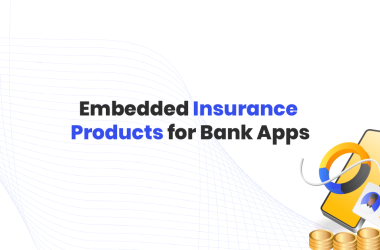Across various Industries, the “as-a-service” business model experienced massive growth in the last few years. We live in an age where convenience is paramount, and naturally, the convenience market (as a service) is booming.
For example, Movie as a service, e.g. Netflix, HBO Max. Banking as a service, e.g. Paypal, Paystack. Transportation as a service, e.g. Uber, InDriver and even Communication as a service, e.g. Whatsapp, Telegram.
Hence, it is only suitable that the insurance industry is also not left out while the “as a service” business model is gaining traction in the insurance sector.
The fundamental idea behind the “as a service” business is that you can buy services from vendors on a subscription basis. Consumers have gotten familiar with these types of products.
The essence of the “as a service” business model boils down to delivering services via the internet that leverages the cloud. So, what does Insurance as a service do?
Insurance As A Service
Insurance as a service is a fully digital insurance offering. It makes it possible for businesses, especially non-insurance ones, to access selected pre-built elements in the insurance value chain on a subscription basis. Essentially, insurance operations are run on behalf of other businesses with insurance as a service.
These service solutions break down the tedious traditional way of doing insurance for consumers and traditional insurance companies and move the process to a cloud-based service, thereby improving the core insurance practices like underwriting, claims processing, customer service, payments etc.
The Insurance industry has been experiencing a rapid shift towards digitalisation. According to a report, 80% of customers are more eager to use digital insurance platforms than the usual traditional insurance process. This reason has forced a relationship between insurtechs and conventional insurance companies. One of the results of this collaboration is the “insurance as a service model”.
One key thing Insurtechs like Octamile are doing is to enable incumbent insurance companies to accelerate their move to using cloud-based solutions to distribute insurance services faster at reduced administrative costs.
Types of Insurance As A Service Model
Insurance as a service has three main models or approaches: Core digitalisation, Full-stack digitalisation and Process digitalisation. Let’s look at what each of these entails.
Core Digitalisation: Startups using this model specialise in one particular core insurance process. For example, a startup’s focus can be to digitalise the underwriting process fully, customer data management, risk management or claims management, distribution or niche insurance products like health or motor insurance.
One of Octamile’s core specialities for incumbent insurance companies is fast-tracking claims processes for their insurance customers.
Startups with this kind of model are always very effective because of the specific know-how.
FullStack Digitalisation: As the name suggests, startups with this model offer a full insurance digitalisation range. They operate a B2B2X model where customers’ specific insurance needs are met through a partner app.
This model involves an end-to-end infrastructure to deploy digital insurance. A technology company can develop a platform for Insurance processes and a licensed white-label backend.
Take a look at how Octamile ensures insurance and non-insurance companies can distribute insurance seamlessly.
Process Digitalisation: Startups operating with this model work with incumbent insurance companies to redesign their internal insurance process. These startups don’t have specific insurance solutions, neither do they have licenced insurance. They only take existing processes for a particular company and digitalise this process.
An example of this service is automated customer support using NLP driven chatbots.
How Insurance As A Service Benefits Your Business And Customers
Tapping into the insurance-as-a-service model to sell insurance as a feature to an existing product or as a different product has numerous advantages, and they include:
- Takes away risks from your customers: Having an option for your customers to include insurance on whatever they are purchasing takes away the risk from your customer. It gives the assurance that whatever happens, they are protected.
- The entry barrier is low: You no longer need unique partnerships with insurance companies to sell insurance to your clients as a business owner. Tapping into “insurance as a service” means you can give your customers the ability to get insurance in just one click instead of having them get insurance on a different platform entirely.
- Earn the trust of your customers: With a personalised insurance experience, your customers can trust that whenever anything goes wrong, there is a cover. When a customer trusts you as a business owner, the result is a recurring purchase.
- Personalised insurance experience for your clients: With insurance as a service, you not only provide your client with the option of buying insurance, you give them the liberty to choose how much cover they want. Not only that, the experience is tailored personally, and that fosters a better business-customer relationship.
- Increased revenue at no cost to you: Without paying for any APIs, you can embed insurance with your product. Earn a commission on each insurance cover your client picks up and still ensure your client is protected. A win-win-win if you ask me.
- Enjoy the one-to-many model: The “as a service” business model has ensured that you can serve as many people as possible without worrying about inventory or stores.
- Plug and play: Embedding insurance with your product or service is done in minutes rather than days and weeks of back and forth. With embedded insurance APIs, you are going to plug and play. Super easy and seamless to start.
- Drive growth and word of mouth marketing: Word of mouth marketing is one of the reliable ways to market your product. We established earlier that people would have no issues trusting you and your products when there’s insurance. It is also known that when people can rely on your services, they tend to tell other people too. With insurance as a service, you can drive this kind of marketing and increase your market share.
See how you can distribute insurance using Octamile’s embedded insurance APIs
Conclusion
There’s an incredible opportunity in technology, and it’s a delight that the insurance industry has already caught this trend and embraced technology-driven products like insurance as a service.
If you are a business owner, partner with the right company to provide you with this insurance service and you could transform your business, increase your revenue and ensure satisfaction for your customers.










